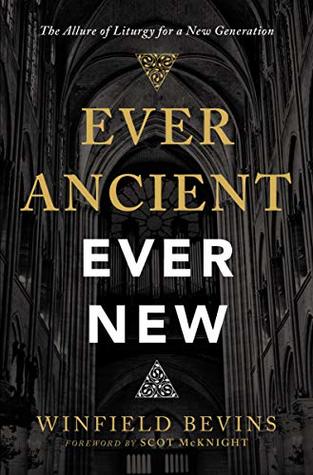More on this book
Community
Kindle Notes & Highlights
Read between
August 11 - August 12, 2019
liturgy, when rightly appropriated, is one of the best ways for us to make disciples in a postmodern context.
While modernity can be characterized as scientific, rational, and pragmatic, postmodernity can be described as experiential, spiritual, and communal.
Young adults sense intuitively that today’s churches have lost a vision for aesthetic beauty that encourages us to experience the mystery and transcendence of God. And they have grown tired of shallow, alternative approaches to the historic liturgical practices of past centuries. Young adults want more. They want depth and mystery, and they aren’t afraid to say it. They are harboring a longing for a church that transcends any single culture, not an approach that simply accommodates the surrounding culture.
Liturgy leads us into a faith that holistically transforms us—our hearts, souls, minds, and bodies.
Biblically defined, worship is the act of giving our whole selves back to God by demonstrating respect, reverence, honor, and glory toward him.
“Liturgy consists of the corporate and individual patterns of devotion, worship, fellowship and obedience that enable us increasingly to manifest in the world God’s kingdom of love, forgiveness, reconciliation, cleansing, healing and holiness.”
Liturgy tells a story. Liturgy is a re-enactment of the divine drama. It reminds us of the redemptive story of God and invites us to find our place within his narrative of redemption.
“The liturgy lives out a story in a story-deprived world. Liturgy is not a once-upon-a-time story we merely watch others perform. We are characters in this story, actors in the divine drama whose opening and closing has been written by Jesus Christ Himself.”
Simply by agreeing to participate and join with the existing structure and rhythms, liturgy has the power to change us.
gathering, hearing, feeding, and sending—
In a liturgical service, the story of God is retold primarily through the reading aloud of the Scriptures, the recitation of prayers, and responsive readings.
After the sermon, the congregation affirms its faith by reciting the words of either the Nicene Creed or the Apostles’ Creed.
After a recitation of the creeds is often a time called the “Prayers of the People” or “Prayers of the Faithful.”
Following the Prayers of the People, the liturgy usually provides the congregation a time for confession of sins before God and one another.
Having been forgiven, the congregation then greets one another with a sign of peace, often called “the passing of the peace.” This is not only a time to greet one another, but also an opportunity to remember our peace with God and with one another.
Hearing the Word prepares us to come to the Lord’s Supper, and the meal itself offers us a way to respond tangibly to the message of God’s Word and the grace preached within it.
At the heart of the Greek word for fellowship (koinonia) is the idea of participation. Koinonia is used to describe both the fellowship and actual participation in the Lord’s Supper.7 No single word in the English language fully captures the meaning of this Greek word. It’s more than just a shared experience and nice conversation with other people. It is, at the deepest level, a spiritual connection in Christ, a supernatural bond provided by God’s grace.
The important thing to note here is that worship and mission are inseparably linked. As N. T. Wright says, “The link between worship and mission is so close that many prefer to speak of them in terms of each other. Glad, rich worship of God revealed in Jesus invites outsiders to come in, welcomes them, nourishes them, and challenges them. . . . Thus, though I continue to speak of worship and mission as separate activities, I also insist on integrating them.”
As the body of Christ, we come together to worship God in order to be sent back out into the world through mission.
“I don’t always believe the words of the Nicene Creed. But I say them anyway. Sometimes they’re more of a confession of desire than conviction, a statement of what I desperately hope to be true.”
“When I struggle to believe, the rhythms and patterns and prayers of the liturgy are like an anchor. It’s as if the rest of the community—those around me and those who came before me—are saying, ‘It’s OK. We’ll carry you through this part.’
“Kneel for prayer, stand for praise, sit for instruction.”
“All may, none must, some should.”
Relocation to the abandoned places of Empire. 2. Sharing economic resources with fellow community members and the needy among us. 3. Hospitality to the stranger. 4. Lament for racial divisions within the church and our communities combined with the active pursuit of a just reconciliation. 5. Humble submission to Christ’s body, the church. 6. Intentional formation in the way of Christ and the rule of the community along the lines of the old novitiate. 7. Nurturing common life among members of intentional community. 8. Support for celibate singles alongside monogamous married couples and their
...more
While theology alone, experience alone, and tradition alone will not form you, when these are combined, we have biblical discipleship.
We need a liturgical matrix that brings together orthodoxy (right doctrine), orthopraxy (right practice), and orthopathy (right experience) in a way that leads to lasting transformation, and I believe the ancient liturgies and practices of the church are foundational for ensuring that our practices are forming us to be mature disciples of Jesus.


